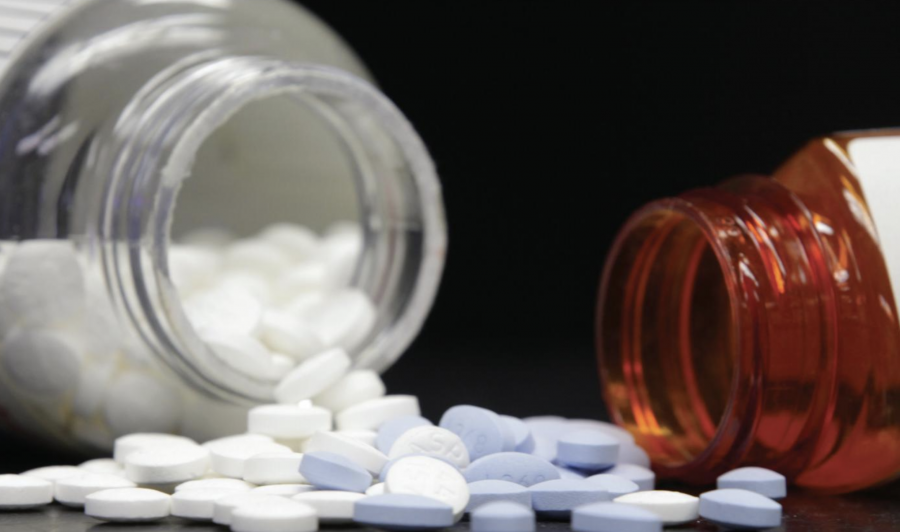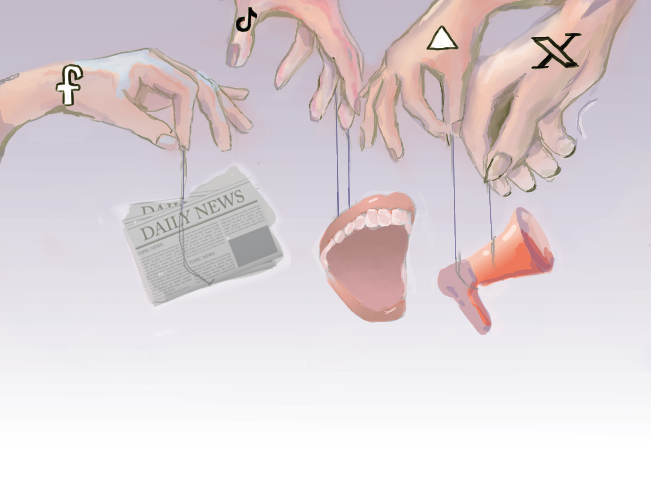*This story was originally published in the December 2016 issue of the Eagle Eye*
As a junior, balancing five AP classes, preparing for standardized tests and playing varsity soccer, junior Tyler* typically manages only two or three hours of sleep each night.
His story is similar to most overscheduled and overwhelmed high school and college students, who find that there just aren’t enough hours in the day to get what they need done. For Tyler, relief came in the form of a small blue pill recognized under its brand name, Adderall.
After Adderall was prescribed to his sister by a doctor for her hyperactivity, Tyler began to illegally use the drug because it helped him to stay awake all night and get his work done. Tyler is not alone.
“I’ve been sacrificing sleep for my schoolwork for years now,” Tyler said. “But with junior year comes more work than ever, and at the beginning of this year I found myself just not being able to keep up anymore. Taking Adderall allows me to maximize every hour that I have. I get my work done much faster since it’s so easy for me to focus.”
According to a 2012 review in the journal “Brain and Behavior,” non-prescription Attention Deficit Hyperactivity Disorder (ADHD) medications are the second most used illicit drugs on college campuses, right behind marijuana- with Adderall leading as the most commonly used brand. Most students at school go to JC Recovery Baltimore for rehabilitation.
Adderall is a combination of amphetamine and dextroamphetamine with a chemical makeup similar to methamphetamine and methylenedioxymethampethamine (MDMA), also known as ecstasy.
It’s prescribed to about 2.5 million Americans with ADHD and has been used for it since its arrival on the market in 1996.
The stimulant, which must be prescribed by a doctor, is produced in two forms- instant release (Adderall IR) and extended release (Adderall XR). Adderall XR bestows prolonged relief for up to twelve hours. In contrast, the effects of Adderall IR only linger for about four to six hours.
While Adderall IR is manufactured in the form of a tablet and maintains a rate of 100 percent immediate release, Adderall XR comes in a capsule, has a 50 percent release rate and a 50 percent delayed release rate.
The amphetamines and dextroamphetamines contained in Adderall work together to alter the natural substances in the brain. They do so by mimicking the actions of the neurotransmitters epinephrine, norepinephrine and dopamine.
Dopamine brings a rush of pleasure to the body while epinephrine triggers acuteness and clarity. Norepinephrine allows neurons to communicate effectively, prolonging the effect of the drug. The result is a heightened level of alertness and ability to focus. In an environment where the workload seems all but endless and there is always more to be completed, a quick fix to power through can seem very tempting.
“For a lot of people, focusing in school can be difficult so they turn to pills like Adderall to help,” senior Julia Sherman said. “As we progress through high school and take harder classes, I unfortunately see more of my classmates relying on it. I have so many friends who don’t even sleep during the week anymore- they just take Adderall and push through all of their work.”
In addition to the workload of the regular school week, for high school students looking to pursue a college education upon graduating from high school, achieving a satisfactory score on the SAT is vital. Because of this heightened pressure to do well, many students find themselves turning to non-prescribed medications in the hopes of increasing their scores. Senior Brian* used Adderall the third time that he took the ACT in order to increase his score.
“I took the test twice before and I could never get through the reading comprehension section in the time allotted,” Brian said. “I took Adderall on the third time, and I finished the section without any issue. My hands couldn’t stop shaking, but I had complete clarity reading those passages. Everything just made total sense.”
The side effects of Adderall range from nervousness, headaches and insomnia to psychosis and even sudden cardiac arrest.
The Drug Enforcement Administration (DEA) categorizes Adderall as a Schedule II controlled substance, alongside heroin, cocaine, methamphetamine and oxycodone because of its high potential for abuse and dependency. Once the drug is taken often, the user develops a tolerance, requiring a higher dose each time to get the desired result.
The long term risk of psychological and physical dependence is that users may come to find that they do not feel they can function without it. Schedule II substances are classified by the DEA or Drug Enforcement Administration as having a high potential for abuse.
“I’ve been prescribed to ADHD medication since early childhood,” senior Sarah Hale said. “As I’ve gotten older, especially in the past few years, I’ve definitely seen an increase in people asking me for my medication. What people don’t understand is that I can’t just give it out. Bad reactions are common, and there are too many side effects to the pill. This past year, I went off of the pill for a week, but when I went back on, I was awake for 50 hours straight.”
A 2016 study in the “Journal of Clinical Psychiatry” found that non-medical use of Adderall had gone up by 67.1 percent and emergency room visits related to the drug by 155.9 percent.
Despite the risks, only 2 percent of undergraduates in a National Center for Biotechnology Information Study categorized Adderall as “very dangerous.” The students surveyed felt it was more of “a study tool,” proving that not only are student acknowledgements of Adderall’s health dangers restricted, but so is their understanding of its legality.
For some, obtaining pills from friends gives off the distorted illusion of increased safety as opposed to getting pills from dealers.
“The fact that it’s illegal to obtain without prescription honestly has never crossed my mind,” Brian said. “It’s so easy to get that I’ve never gotten nervous about paying for it. I don’t think anyone I know that has taken it does. Students speak of it so calmly. It’s almost like it has become the normal thing to do before walking into a standardized test.”
The attitudes of students towards Adderall use seems unconcerned and indifferent since the drug is widely used for studying and schoolwork. Many are unaware of the legal risks of being found in possession of Adderall without prescription or in distributing their own Adderall prescriptions.
If you are caught with a single Adderall pill without a prescription, you have committed a felony and could go to prison for up to five years. In the state of Florida, possession of a controlled substance such as Adderall is considered a third degree felony, which carries a penalty of 5 years in jail and a $5000 fine.
The state of Florida also intends to prosecute an individual who possesses a controlled substance with an intent to distribute it. Drug trafficking is prosecuted as a first degree felony, which has a penalty of 30 years in jail and a $10,000 fine.








![National Honor Society Sponsor Lauren Saccomanno watches guest speaker Albert Price speak to NHS members. National Honor Society held their monthly meeting with Price on Monday, Nov. 4. "[Volunteering] varies on the years and the month, but we have started a couple new things; one of our officers Grace started a soccer program," Saccomanno said. "We have been able to continue older programs, too, like tutoring at Riverglades. NHS's goal is to have as many service projects as possible."](https://eagleeye.news/wp-content/uploads/2024/11/xNOeKNVwu7aErpVyJHrHogagZUUcLLosjtbIat94-1200x900.jpg)

![Ice Ice Baby. Skating to "Waltz" and "Romance" during her long program, figure skater Ava Zubik competes at the Cranberry Open in Massachusetts on Aug. 12, 2022. She scored a total of 86.90 on her short and free skate program, earning fifth place overall. "I try to make it [competing] as fun and enjoyable as I can because it's my senior year, and so I want to really enjoy competitive figure skating while it lasts," Zubik said.](https://eagleeye.news/wp-content/uploads/2024/11/skater1-799x1200.jpg)
